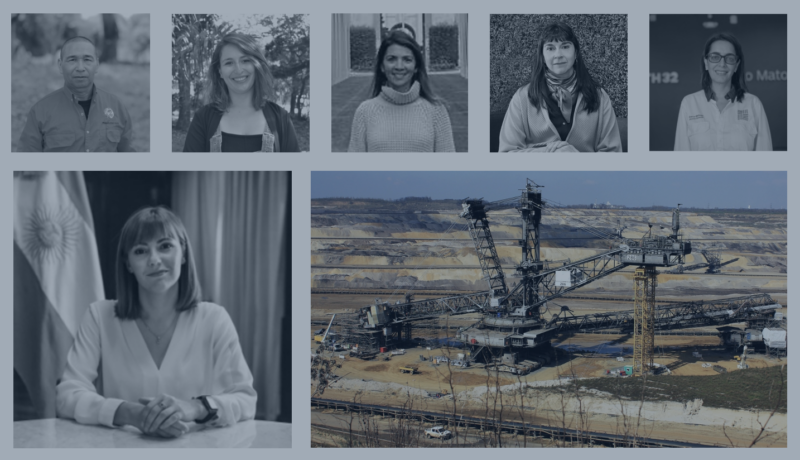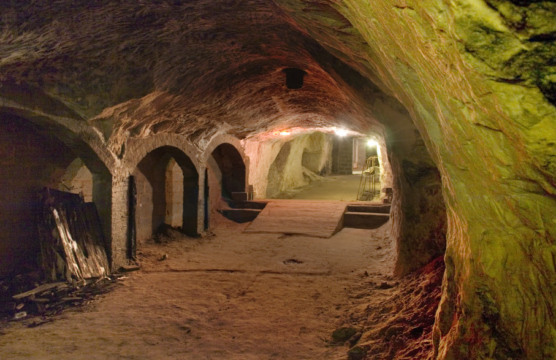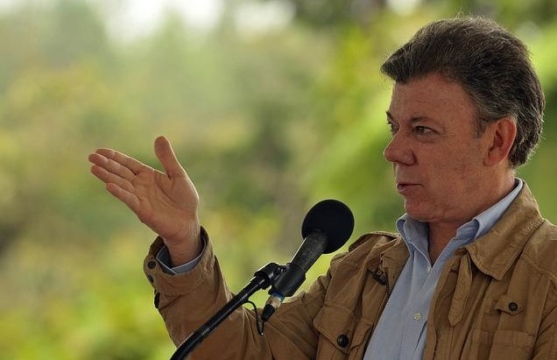
Development vs. Conservation
Ecuador may well play a decisive role in the outcome of the global tension between economic development and environmental conservation.
This post is also available in: Español
Amidst a spike in demand for the minerals critical to the energy transition, mining activities will have a profound impact on those living near mining sites. To explore the social and human rights implications of critical minerals mining, the Inter-American Dialogue hosted the online event “Critical Minerals in LAC: the ‘S’ in ESG” on April 11, 2023. Daniela Stevens, program director and moderator of the event, gave opening remarks. She was followed by Minister Juan Manuel Cortelletti, head of political section at the Argentine Embassy, who introduced the keynote speaker, Secretary Ávila.
María Fernanda Ávila, who serves as Secretary of Mining in Argentina’s Ministry of Economy, discussed how mining is regulated across the national and provincial governments. As Argentina is one of the world’s largest lithium producers, mining plays a key role in both the national and provincial economies. Across multiple provinces, mining makes up more than 75 percent of total exports. However, the regulation of these resources is complicated. Provinces own resources that lie within their territory, but they must follow a national mining code which regulates resource governance and usage. This complex relationship can engender regulatory challenges. Given that Argentina plans to multiply its mining exports fivefold by 2030 through the development copper and lithium, complications with local communities are expected to grow. Federal and provincial governments have created several roundtables and councils that bridge the gaps between federal and provincial governance to enhance problem-solving.
In terms of maximizing social benefits, the country has focused on improving industry transparency. Two key initiatives include their Information System about Mining Activity Open to the Community (Sistema de Información Abierto a la Comunidad sobre la Actividad Minera en Argentina) as well as their Mining Roundtable Open to the Community (Mesa Nacional sobre Minería Abierta a la Comunidad). These provide spaces for interrogation and dialogue to increase access to environmental information throughout the country.
According to Secretary Ávila, the government learned one of the greatest lessons after the closure of La Lumbrera copper project in Catamarca: it is fundamental to plan, from project inception, what will happen to a community after the mine closes. Governments must support alternative kinds of economic development with other productive sectors not dependent on mining to generate sustained income security for residents.
Another initiative to ensure company compliance with environmental impact statements includes participatory monitoring to enable communities to monitor impacts in areas with less government presence. Olga Teresita Regalado, Secretary of Mining Development for the Province of Catamarca, discussed how this mechanism has been implemented locally. Secretary Secretary Regalado also discussed the province’s participatory mechanisms in place for assessing social impact throughout a project’s lifetime, from an initial, inter-institutional review of environmental impact statements to various fora for consultation, public participation, and monitoring. These consultation processes and public hearings were carried out with communities along the Salar del Hombre Muerto. For example, during consultation processes, the community living next to the Sal de Vida project explained that even though they agreed on reaping the benefits of lithium extraction, the Catamarca government first needed to enact controls and safeguards so that extraction left minimal impact on water provision.
Transitioning to the private sector perspective, Joyce Nessin, External Affairs Manager for Cerro Matoso S.A, told the story of Cerro Matoso’s transformation of its relationship with communities neighboring its ferronickel mine. Around ten years ago, local communities blocked access to the mine for thirty days, claiming that the Cerro Matoso did not bring sufficient benefits to their territory. This led to a long process of participatory, multi-cultural dialogues that the company called “nuevo relacionamiento,” (in English: new relationship) which ultimately led to community investments and a formal prior consultation agreement between both parties. As part of this compromise, Cerro Matoso’s community interaction now centers on local economic self-sufficiency so that the community can continue to prosper after the mine is out of service. Under this framework, the community determines which programs to prioritize, and the company provides technical experts to help these be realized. To measure the difference that these projects make and ensure accountability, every three years, Cerro Matoso measures the Multidimensional Poverty Index (MPI), the same metric used by the Colombian government. Between 2015-2022, the MPI of the communities in surrounding areas lowered 11 percent, demonstrating that their investments are leading to better quality of life for those in the area.
Their programs cover diverse needs and areas. For example, Cerro Matoso has given local communities more than 100,000 hectares of land, improved the quality of local housing, and given out scholarships for higher and technical education. One of the projects highlighted was that of Joaquín Rojas, a leader of the Zenú Indigenous community and the founder of Pisadas Zenú. With the help of the prior consultation agreement, Rojas’s reforestation enterprise has grown from 10 employees to around 75, enabling the company to replant over 500,000 native trees. Rojas acknowledges that mining will inevitably have positive and negative impacts, and recommends that mining companies seeking to establish ties with local communities have an open-door policy, sincere permanent dialogue, and provide continuous information to local stakeholders.
Tying together the experience of governments and the private sector, Natascha Nunes da Cunha, lead mining specialist at the Inter-American Development Bank, and Kamila Gomez, gender and human rights specialist at the Association for Responsible Mining, both emphasized the need to ensure start-to-finish dialogue with all stakeholders involved to maximize social benefits and foster innovative problem-solving.
Nunes da Cunha explained that the rapidly transforming energy sector is creating a “paradigm shift” for mining, and the best way to ensure socially responsible mining is to begin all projects with dialogue based on trust and mutual respect, widely absent in the sector given the long history of poorly implemented projects in the region. According to the specialist, Latin America must take advantage of its natural resources. However, crucially, countries must have adequate national institutions and sufficient local capacity to oversee compliance with ESG standards and best corporate practices in order to hold companies accountable and protect marginalized communities. Although the mining sector has seen promising technical innovation recently, Nunes da Cunha pointed out the real lack of innovation in the space of relationships between governments, civil society, and the private sector. Moreover, she agrees that the sector must be used to leverage high-value supply chains that engender development beyond mining.
In order to bring all actors to the table, Gomez outlined how her organization maps out all stakeholders within a territory prior to consultation meetings. This ensures that every group has a seat at the table. Nunes da Cunha agreed that this is especially important in mining projects, given that they oftentimes fall in rural areas where government is not especially present. In these cases, companies sometimes must go beyond government requirements for prior consultation.
Overall, all panelists continually emphasized the need for robust, inclusive dialogue, indicating that expectations around the social contract for mining are slowly growing.
Ecuador may well play a decisive role in the outcome of the global tension between economic development and environmental conservation.
Colombia has to remain competitive with other major producers such as Mexico to attract needed investment in extractive industries.
After winning a second term, the hard work now begins for President Juan Manuel Santos.


